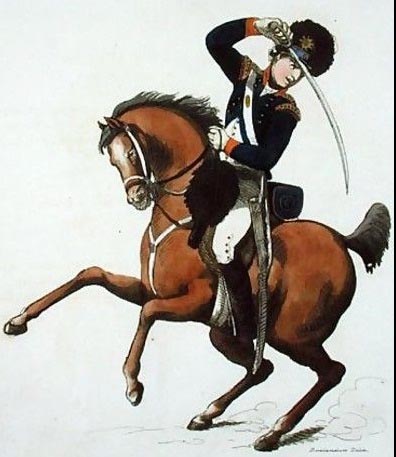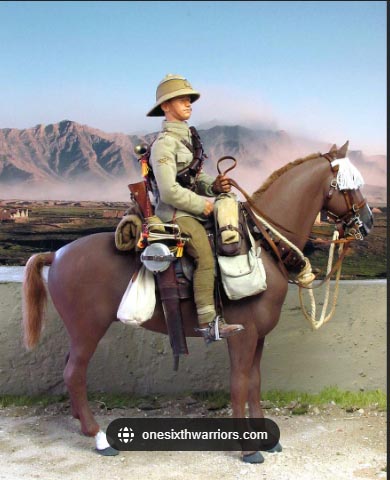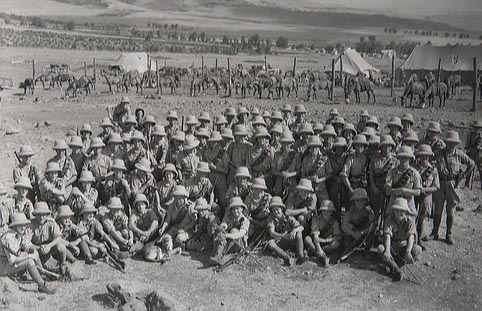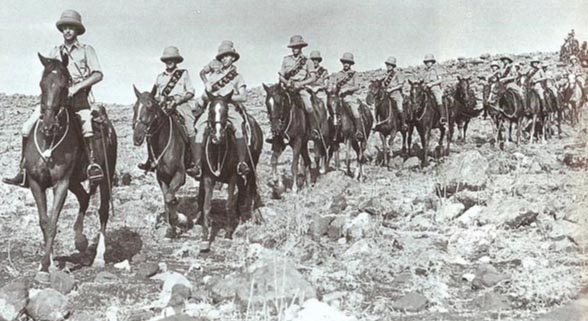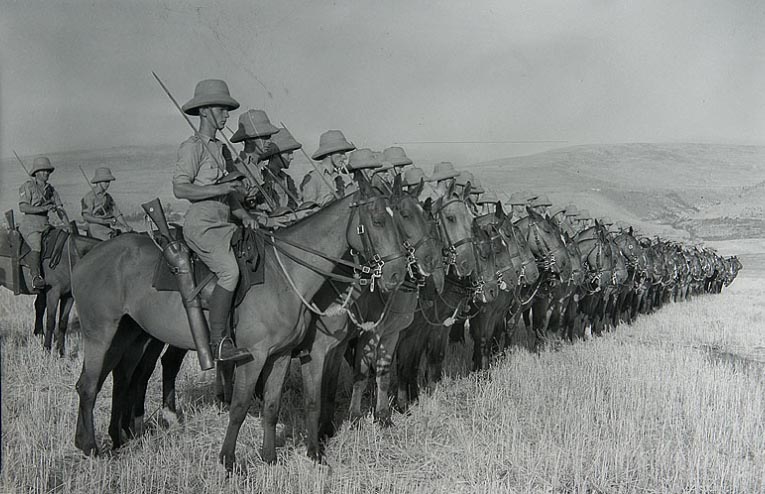Jonathan Hunt is a retired solicitor in Sheffield with connections with the Sherwood Rangers and the SSAFA, the armed forces charity supporting veterans and their families. As a member of the Sheffield Club, he was trying to elicit information about the cavalry campaigns in Palestine in WW2 when he realised that it was ‘not on’ for Yeomanry officers to boast. But this also meant that it was likely that their military achievements were going to be lost to the general public.
Yeomanry regiments were drawn initially from the landed gentry and farming stock. The volunteers were expected to provide their own horses back in 1745, at a time of national emergency when several regiments were formed to protect the establishment against the Jacobite Rising and Napoleon’s activities.
There is a perception that the machine gun spelt the end of the cavalry regiments, to be replaced by armoured vehicles. This is not wholly true as a cavalry man charging at full gallop is not an easy target, especially if followed immediately by further waves of the same for a machine gunner. During WW1, General Allenby was particularly good at coordinating the different elements of warfare. He used cavalry effectively in North Africa and in defeating the Ottoman Empire armies.
After WW1 Yeomanry Regiments were used to police the British territories in North Africa as they could cover large distances in difficult terrain without mechanical support. With the outbreak of WW2, their use in Palestine was of great advantage. The enemy were essentially the Italians, the Vichy French and of course the Germans.
In September 1939 the Territorial Army, including the Queen’s Own Yorkshire Dragoons, was mobilised. Training was at Hovingham, Swinton Grange and Slingsby in North Yorkshire. The Middleton and Sinnington hunts were patronised by the officers at this time. By November the Regiment was based in Lincolnshire to await transportation to the Middle East. In the Spring of 1940 the regiment was engaged in peacekeeping around Tel Aviv where there was civil unrest. The sporting and welfare facilities here included horse jumping shows, a football pitch and shooting of quail and jackals.
On 18th May a camp was established at Manosusa and first contact was made with the enemy. It was in the form of inspecting the German-held villages that had already been surrounded with wire. Quantities of German political uniforms, flags and newspapers were found to confirm that these settlements were centres for stirring up unrest among the Palestinians. This was the time of the Dunkirk evacuation and the fall of France. The regiment was moved to Acre because of the increased threat to Palestine from the north and east. The yeomanry brigades were the main lines of defence in Palestine and were well qualified to cover the wide spaces on the Lebanon and Syria borders.
On 5th May 1941, the Yorkshire Dragoons moved out to cover the frontier area opposite the Syrian and Lebanese border. General Wavell noted that the position in the Middle East was governed by air power,. “We must try to keep Germany from establishing itself in Syria …. It will not be easy with our resources,” he said.
‘Operation Exporter’ was the campaign to push north through Syria and Lebanon towards Turkey against the Vichy French. It began on 8th June and by 7th July Damascus had surrendered. The regiment moved on to Jebel Druse and split into two squadrons. One was attacked and a troop was surrounded by a Druse cavalry regiment. Bruce Hobbs, with orders not to get involved in armed combat, immediately withdrew by breaking through the Druse cavalry. Three men and a horse were wounded. This was possibly the last mounted action ever fought by the British Army. On 12th July the Vichy French defending Beirut sued for an armistice and the campaign successfully concluded.
This campaign, rather than Alamein, counts as one of the first Allied victories on land of WW2 – and few are aware that it happened.


